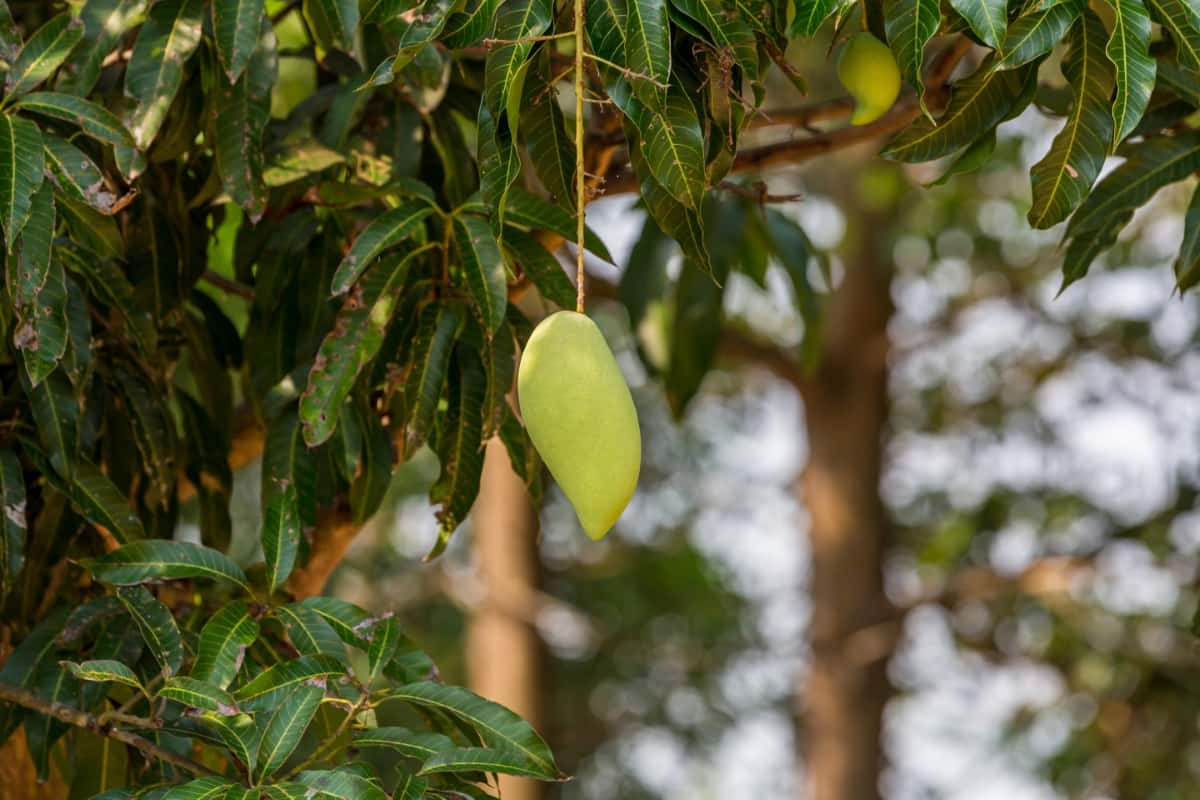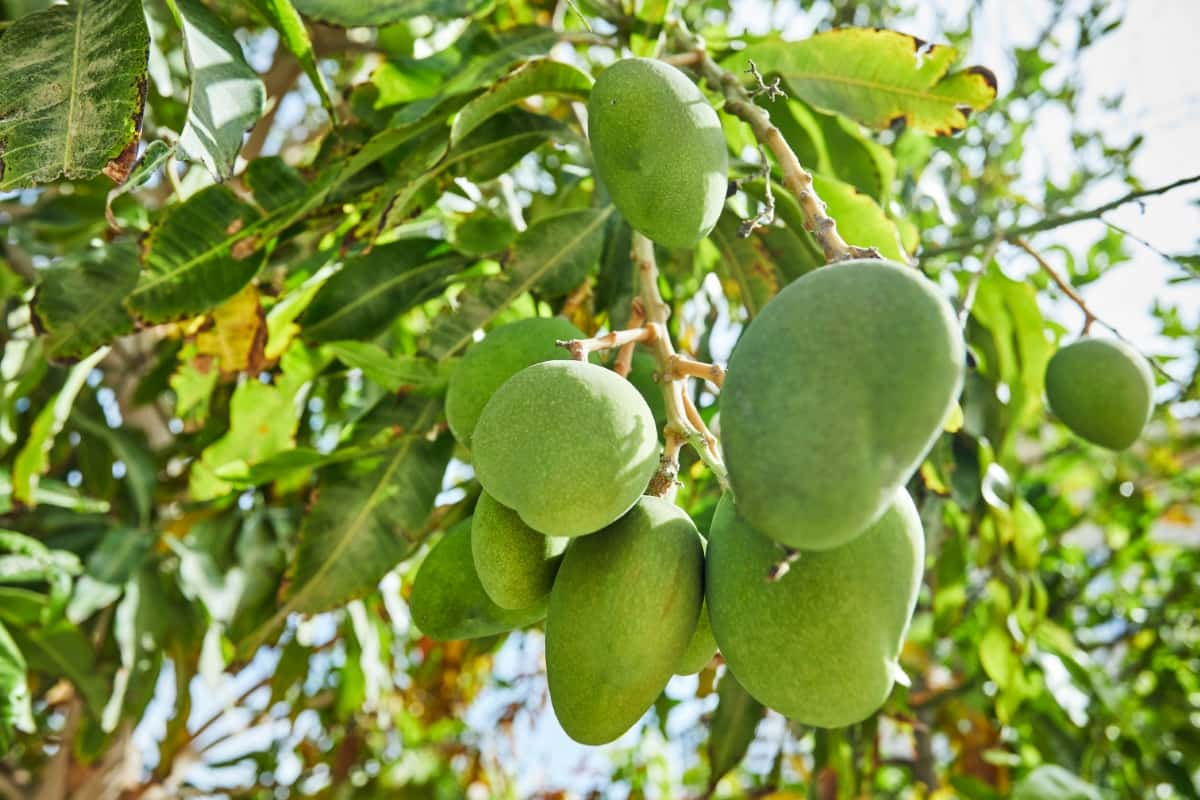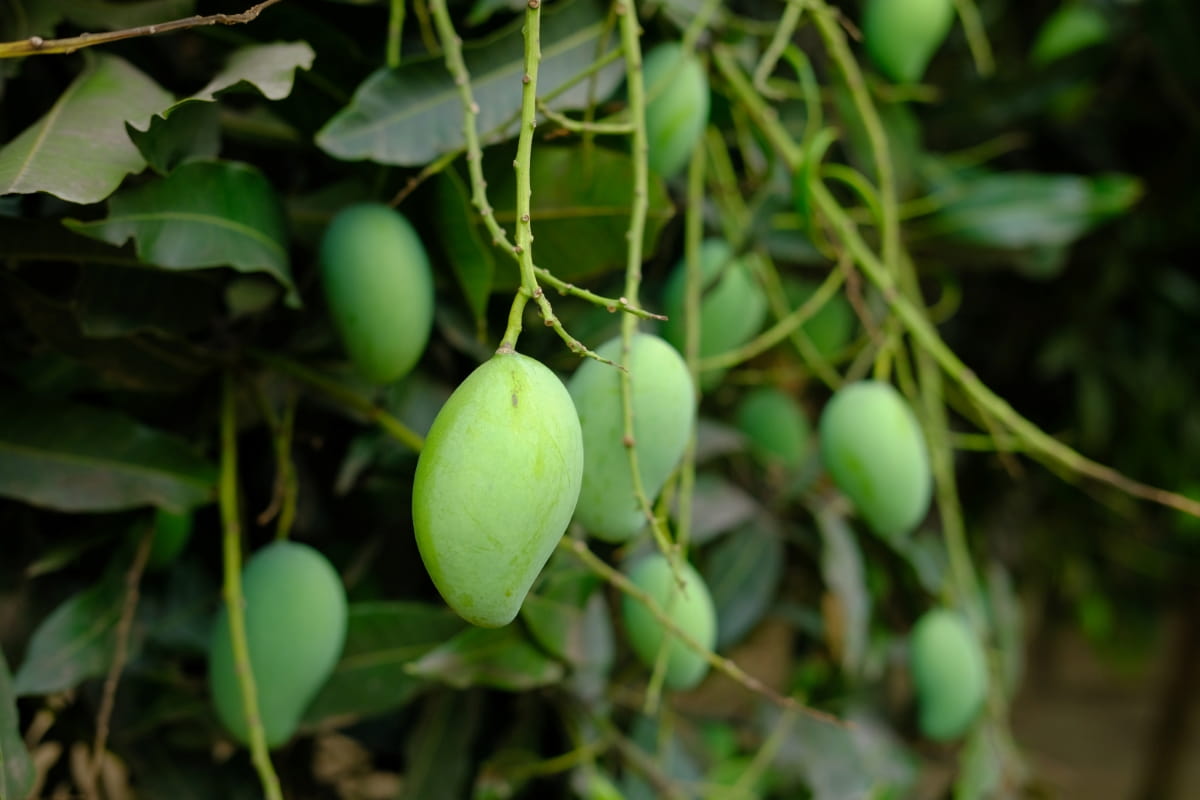Treating Mango tree leaf curl naturally and organically is not only effective but also better for the overall health of your trees. Mango tree leaf curl can be a frustrating problem for any gardener or homeowner. However, with the right knowledge and remedies, you can effectively treat and prevent this issue naturally and organically.

By understanding the causes of Mango tree leaf curl, such as pest infestation, nutrient deficiencies, fungal infections, or environmental factors like excessive heat or cold weather conditions, you can address these issues promptly to minimize damage to your Mango trees.
Natural and Organic Ways to Treat Mango Tree Leaf Curl
Neem Oil for Mango Tree Leaf Curl
There are many homemade sprays for leaf curl. One effective natural remedy for treating Mango tree leaf curl is neem oil. To use Neem oil on your Mango trees, dilute it with water according to the instructions on the bottle. Then, thoroughly coat both sides of the affected leaves with the solution using a sprayer or spray bottle. The neem oil will inhibit fungal growth and prevent further leaf damage.
It’s important to note that neem oil should be applied when temperatures are below 32°C to avoid burning the foliage. Additionally, it’s recommended to apply neem oil in the early morning or late afternoon when bees are less active. Regularly applying neem oil every two weeks can help control and reduce leaf curl symptoms. Remember that consistency is key when using organic treatments like this one.
Copper-Based Fungicides for Mango Leaf Curl
When applying copper-based fungicides, following the instructions on the product label carefully is important. Dilute the fungicide in water according to the recommended ratio and apply it evenly on both sides of the affected leaves. This will ensure thorough coverage and maximum effectiveness.
Remember that excessive use of copper-based fungicides can lead to copper toxicity in plants, so it’s crucial not to overdo it. Use these products sparingly and only when necessary. In addition to treating existing leaf curl, copper-based fungicides can be a preventative measure. Applying them before any signs of infection can help protect your Mango tree from future fungal attacks.
Pruning Infected Leaves on Mango Trees
Pruning infected leaves on Mango trees is important in treating leaf curl. It’s a sign of infection when you notice curled or discolored leaves on your Mango tree. Pruning these infected leaves can help prevent the spread of disease and promote healthier growth. Start by identifying the affected branches and leaves. Look for signs of discoloration, curling, or wilting. Using sharp pruning shears, carefully remove these infected parts from the tree. Make sure to disinfect your tools between cuts to avoid spreading any potential pathogens.
Pruning should be done during dry weather conditions to minimize moisture-related issues. It’s best to prune in early spring before new growth begins, but you can also remove infected foliage throughout the year as needed. Remember that pruning alone may not eliminate leaf curl; it should be combined with other organic treatments for better results. Regularly monitor your Mango tree for any signs of re-infection and continue implementing preventive measures discussed earlier.
Proper Watering Techniques for Mango Trees
Proper watering techniques are essential for maintaining healthy Mango trees and preventing leaf curl. Mango trees require regular watering, especially during their growing season. However, overwatering can lead to waterlogged roots and fungal infections, while underwatering can cause stress and leaf curl.
Monitoring the soil moisture levels is important to ensure that your Mango tree receives the right amount of water. Stick your finger into the soil about 2-3 inches deep to check if it feels dry or moist. If it feels dry, it’s time to water your tree. Water deeply but infrequently. Give your Mango tree a good soaking once or twice a week rather than shallowly watering daily. This helps promote deeper root growth and prevents surface-level evaporation.
In case you missed it: Natural and Organic Ways to Treat Pumpkin Leaf Curl: Fix With Effective Home Remedies

Avoid wetting the leaves when watering your Mango tree as much as possible. Wet foliage provides an ideal environment for fungal diseases to thrive. During heavy rainfall or excessive humidity, reduce watering frequency accordingly, as too much moisture in the soil causes root rot and other fungal problems.
Application of Compost or Organic Fertilizers
Compost or organic fertilizers can be an effective and natural solution when treating Mango tree leaf curl. Compost is rich in nutrients and beneficial microorganisms that help improve soil health and provide essential nutrition to the Mango tree. Organic fertilizers, such as animal manure or seaweed extract, are also excellent options for promoting healthy growth in Mango trees.
These natural fertilizers release nutrients slowly over time, ensuring a steady supply of nourishment without causing any harm to the environment. To apply compost or organic fertilizers to your Mango tree, start by spreading a layer around the tree’s base, being careful not to pile it up against the trunk. It’s important to note that excessive use of chemical-based fertilizers can do more harm than good. Organic alternatives are safer for both your trees and the surrounding ecosystem.
Using Organic Mulch Introducing Beneficial Insects
Organic mulch retains moisture in the soil and regulates temperature, creating a favorable environment for the Mango tree. Apply organic mulch around the tree’s base, ensuring not to pile it against the trunk. This will prevent weed growth and reduce water evaporation. Introducing beneficial insects is another eco-friendly way to combat Mango leaf curl.
Ladybugs and lacewings feed on other pests that can cause leaf curling. You create a balanced ecosystem around your Mango tree by using organic mulch and attracting beneficial insects. This helps control pests naturally without relying on harmful chemicals or pesticides.
Promoting Good Air Circulation
Promoting air circulation around your Mango trees is crucial in preventing and treating leaf curl. Adequate airflow helps reduce humidity levels, creating a favorable environment for fungal growth. When planting Mango trees, ensure they have enough space between them. This allows for proper airflow and prevents overcrowding, which can trap moisture.
Regularly prune your Mango trees to remove dense or overlapping branches that impede air movement. Focus on creating an open canopy that allows sunlight and fresh air to reach all parts of the tree. If your Mango tree has excessive fruit clusters, thin them out by removing some fruits. This reduces the load on the branches and improves airflow through the tree.
Regular Monitoring and Early Detection
Regular monitoring and early detection are crucial in maintaining the health of your Mango trees. By closely monitoring your trees, you can identify any signs of leaf curl or other diseases early. One effective way to monitor your trees is by regularly inspecting the leaves for abnormalities. Look for curled or distorted leaves, discolored spots, or powdery mildew-like growth. These could be indicators of leaf curl disease.
In case you missed it: Natural and Organic Ways to Treat Peach Leaf Curl: Fix With Effective Home Remedies

In addition to visual inspection, it’s important to pay attention to changes in the tree’s overall appearance and behaviour. If you notice stunted growth, wilting branches, or declining fruit production, it may be a sign that something is wrong. Take immediate action when you notice leaf curl symptoms on your Mango trees. This can include applying neem oil or copper-based fungicides to treat the disease.
Conclusion
Treating Mango tree leaf curl naturally and organically is effective and environmentally friendly. Remember, prevention is key to maintaining the overall well-being of your Mango trees. Regularly inspecting them for signs of pests or diseases, providing adequate sunlight and ventilation, practicing proper watering techniques, and ensuring proper soil nutrition are essential in preventing leaf curl. By proactively caring for your Mango trees, you can enjoy healthy foliage, abundant fruit production, and a flourishing orchard.
- Ultimate Guide to Ossabaw Island Hog: Breeding, Raising, Diet, and Care
- Ultimate Guide to Juliana Pig: Raising Facts, Size, Diet, Care, and Lifespan
- Raising Lleyn Sheep: Disadvantages, Price, Uses, Characteristics, and Care
- Ultimate Guide to Meishan Pig: Breed Facts, Breeding, Raising, and Care
- Ultimate Guide to Teacup Pigs: Raising, Diet, Lifespan, Cost, and Care
- Guide to Raising Poll Dorset Sheep: Facts, Profile, Characteristics, Uses, and Care
- Ultimate Guide to Bighorn Sheep: Characteristics, Diet, Lifespan, Breeding, and Lifecycle
- Ultimate Guide to Raising Katahdin Sheep: Farming Facts, Breed Profile, Uses, and Care
- Ultimate Guide to Raising Oreo Cows: Belted Galloways Farming Facts, Profile, Uses, and Care